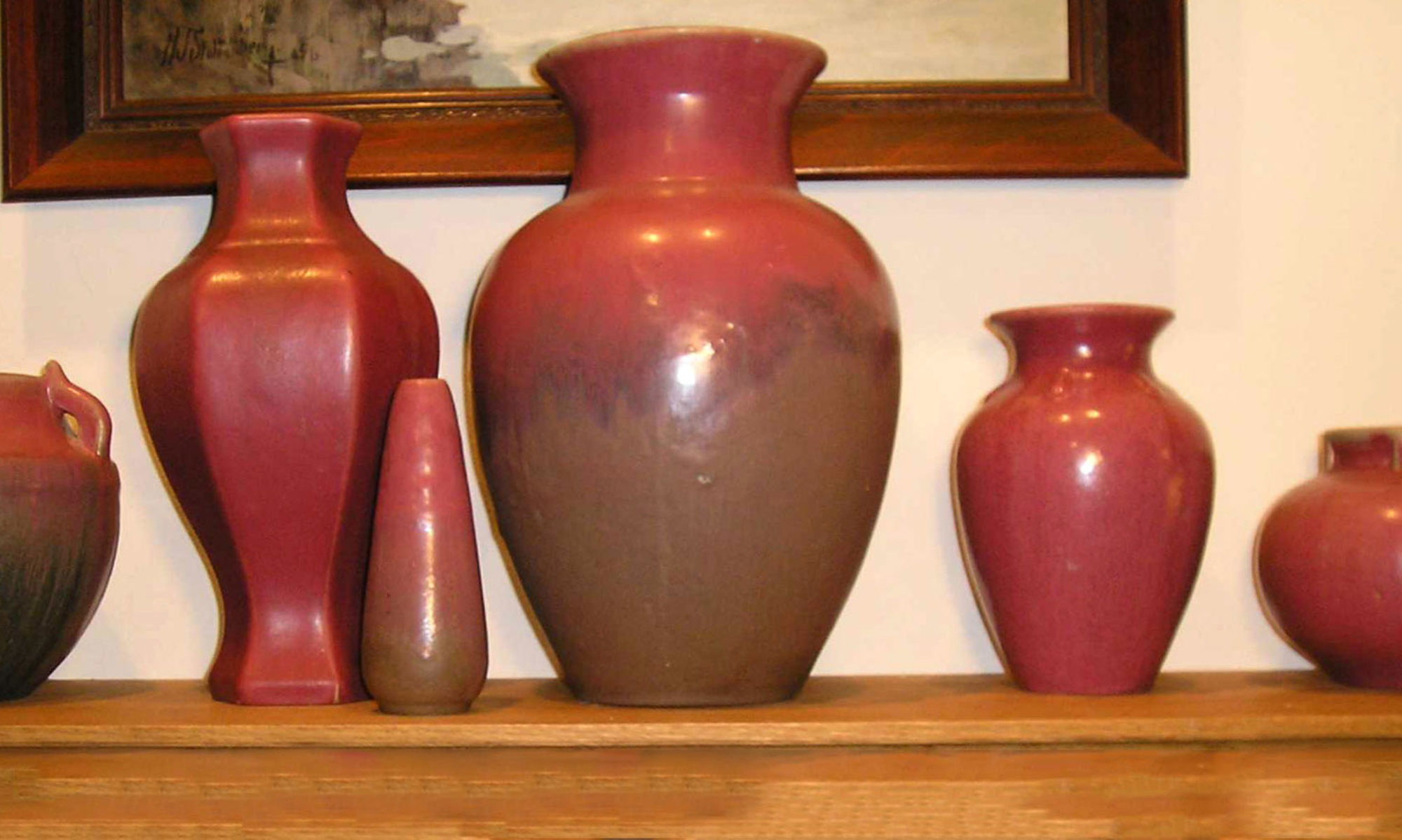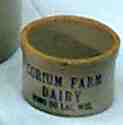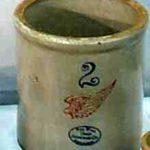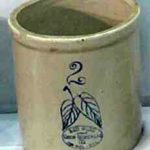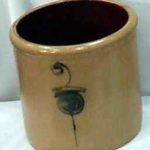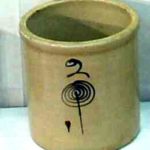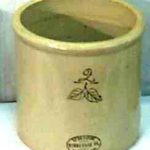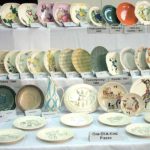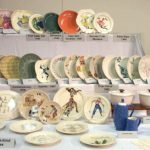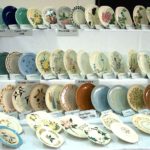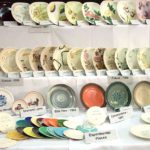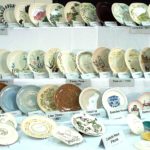The Wisconsin Pottery Association 2002 Show and Sale
August 2002
Outside of a Red Wing convention, the possibilities of seeing this many examples of Red Wing identified doesn’t happen very often, except in books.
The 2002 Exhibit display had several rare Red Wing pieces & an example of every line of Red Wing’s dinnerware.
Special thanks to Sue Jones & Steve Brown for their help on the display and in website presentation.
The Red Wing Legacy: Stoneware, Art Ware and Dinnerware
Due to the large & diverse display, the exhibit is being shown on the website in three sections:
Stoneware
Art Ware (Coming soon)
Dinnerware
Stoneware
Early Ware
Although Red Wing’s clay industry began as early as 1855 with brickmaking, the town’s first make of jugs, crocks and jars was active in 1861. He was a German immigrant named John Paul (sometimes erroneously referred to as Joseph Pohl).
By 1868 a pottery had been built by the town’s mayor, Francis F. Philleo. Philleo made crocks and churns that were lead-glazed or unglazed. In 1870 his factory burnt and was rebuilt. The firm was called Philleo and Williams and it began to specialize in terra cotta ware. In 1871 Philleo took on partners and the firm became Philleo & Sprague, although it was generally known as the Red Wing Terra Cotta Works. The business was moved to St. Paul in 1880.
In about 1872 English potter David Hallum landed in Red Wing via Ohio. He worked for Philleo initially, but by 1875 he had formed a business with partners that ins generally referred to as the Minnesota Pottery. By 1877 Hallum sold his interest in the company to the newly formed Red Wing Stoneware Company, an organization funded by local businessmen for the purpose of large-scale stoneware manufacture. The venture was very successful, so much so in fact that a second firm was begun in 1883 by many of the same investors. That firm was the Minnesota Stoneware Company.
In 1892 a third company was formed: The North Star Stoneware Company. In 1894 all three companies organized the Union Stoneware Company to act as their single sales representative. In 1896, North Star was absorbed by the other companies, which in turn merged in 1906 to form a single entity, Red Wing Union Stoneware.
Up until the mid 1890s, decorated salt glaze ware was the predominant product. Technological advances in the 1890s allowed for a white zinc-based glaze and rubber stamp decorations, resulting in a more uniform product. The familiar red wing logo dates from this period.
Turn-of-the-century production at Red Wing became diversified. By 1900 Red Wing was making spittoons, umbrella holders, jardinières and garden ware. And, like other stoneware makers, the art pottery craze of the late 19th century led Red Wing to make its first true art ware.
Stoneware Gallery
Dinnerware
Red Wing dinner ware production began in 1935 with Gypsy Trail, a RumRill product. Gypsy Trail was glazed in the bright colors popular at that time. It was eventually made in several embossed patterns. As the production of stoneware decreased, the financial importance of dinnerware increased, and it became “the pottery’s staple product from the early 1940s until operations ceased in 1967” (Nelson, page 81).
Most Red Wing dinnerware patterns were designed by Charles Murphy, but one notable exception was the bestseller Town and Country, which was created in 1946 by noted industrial designer Eva Zeisel. It became one of Red Wing’s most important commercial products upon its release in 1947, and was sold for many years. The Museum of Modern Art is reproducing the ware today, a comment on the ware’s place in American modern design.
As Marion Jon Nelson notes, Red Wing dinnerware was significant artistically, as well as commercially. Red Wing’s art ware never used under-glaze painting, a technique that grew out of the china painting hobby of the late 19th century. But under-glaze was used in Murphy’s dinnerware designs, and beautifully too: his cowboys, birs and other cheerful, clever and distinctly American designs give Red Wing dinnerware a place among the very best ever made in this country. It also marked the end of the large scale commercial use of this decorating tradition in the United States.
At the 2002 Wisconsin Pottery Show & Sale, almost 100 different examples of Red Wing’s dinnerware were displayed. Also displayed were 50 experimental glazes and lunch time pieces.
Dinnerware Gallery
These pictures give you an overall view of the dinner ware section of the display. Click to view larger and scroll through the gallery. In time we will add more images with close ups and categories.
Bibliography and Further Reading
The following publications were used in the preparation of this exhibit and provide further reading.
Art Pottery of the Midwest
by Marion John Nelson, University Art Museum, University of Minnesota, Minneapolis
Red Wing Art Pottery Including Pottery Made for RumRill / Classic American Pottery from the 30s, 40s, 50, & 60s
by Ray Reiss. Property, Chicago, 1996
Red Wing Potters & Their Wares
by Gary and Bonnie Tefft. Third Edition. Locust Enterprises, Menomonee Falls, 1996
Art Pottery of the United States
by Paul Evans, Feingold and Lewis Publishing, New York, 1974
Red Wing Art Pottery Two / Including Pottery Made for RumRill
by Ray Reiss. Property, Chicago, 2000
Red Wing Stoneware / An Identification and Value Guide
by Dan DePasquale, Gail DePasquale, and Larry Peterson, Collector Books, Paducah, 1983
Red Wing Advertising Stoneware, Vols. I & II
by Terry and Darla Schuett. SSen Publishing, Wausau, 1998, 1999
Red Wing Dinnerware Price and Identification Guide
by Ray Reiss. Property, Chicago, 1998
